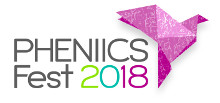Description
Chair : Tasneem Rashid
Pion production in NN collisions is one of the sources of information on the NN interaction and on the contribution of nucleon resonances. In particular, two-pion production in the few energy range, carries information both on single and double baryon excitation and on $\pi\pi$ dynamics, which are also useful for the interpretation of dielectron production. Baryonic resonances indeed...
The expected increase of the particle flux at the high luminosity phase of the LHC (HL-LHC) with instantaneous luminosities up to L ≃ 7.5 × 10^{34} cm^{−2} s^{−1} will have a severe impact on the ATLAS deetctor performance. The pile-up is expected to increase on average to 200 interactions per bunch crossing resulting in a vertex density that can be larger than 1.5 per mm.
The reconstruction...
The CMS experiment implements a sophisticated two-level triggering system composed of a Level-1 trigger, instrumented by custom-design hardware boards, and a software High-Level-Trigger. A new Level-1 trigger architecture with improved performance is now being used, allowing complex correlations to be computed online. The implementation of the first dedicated Vector Boson Fusion trigger...
In the context of High Luminosity phase of LHC (Phase-2), envisaged to start in $\sim$2026, it's planned to increase the beam luminosity up to $7.5\cdot10^{34} cm^{-2}s^{-1}$ and collision energy up to 14 TeV in the center of mass to achieve the high-precision results in the project tasks. These conditions will lead to additional requirements especially on an inner part of the ATLAS detector...

